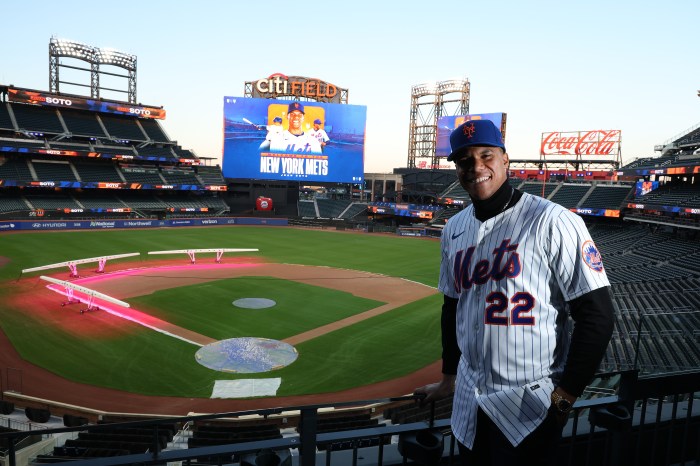By Courtney Dentch
In January 1977, the United States Tennis Association president was flying into New York City to meet with the Parks Department commissioner to discuss a new home for the group and for the U.S. Open.
The tournament had outgrown the capacity of the small West Side Tennis Club in Forest Hills, and the president, W.E. Hester, was hoping to find an alternative site in the city.
He gazed out the window as his plane approached LaGuardia Airport and found the answer he was looking for. Underneath the snow, in the middle of Flushing Meadows Corona Park, sat Louis Armstrong Stadium, and Hester had found a home for what would become the USTA’s National Tennis Center in Flushing.
Now, 24 years later, the center is the largest public tennis facility in the world, with more than 33 outdoor courts, nine indoor courts, and two stadiums, and is open to the public for year-round play.
The U.S. Open tournament began in 1881 by the United States National Lawn Tennis Association, as the USTA was known then. A single men’s tournament, it grew to include five major championships by the time it established its base at the West Side Tennis Club in Forest Hills in 1968. It started that year with a total of about 160 players, and now draws more than 600 competitors annually, according to the USTA Web site.
The stadium at Flushing Meadows Corona Park had been built for the 1964 World’s Fair, but it went unused, for the most part, until the USTA took an interest in it in the late 70s. Hester brokered the lease deal with New York City, and in October 1977, the group broke ground for renovations at the site, and the new facility was ready just 10 months later, in time for the 1978 U.S. Open.
In March, 1995, the National Tennis Center was expanded, and Arthur Ashe Stadium was built. The arena was named for the tennis great who won the U.S. Open in 1968 to become the first black man to win a Grand Slam event in tennis and end a 12-year drought for American men in the tournament.
“I think Arthur would have been extremely proud of this honor because he was very committed to the USTA and to helping it create opportunities for those who need them most,” Jeanne Moutoussamy-Ashe, Ashe’s widow, said when the USTA announced the new stadium’s name in 1997. “I am grateful that with Arthur Ashe Stadium at the USTA National Tennis Center, there is now a memorial for Arthur here in New York City.”
The new arena has four levels, and includes seating for 22,547 fans, 90 luxury suites, a two-level player’s lounge, five restaurants for players, media, and spectators, and more restrooms, concession stands, entrances, and handicapped seating than its predecessor, the Louis Armstrong Stadium, according to the USTA Web site. The latter stadium also got a face lift in 1995, with a reduction in seating, from 18,000 to 10,000 seats, creating a more intimate setting for tennis matches. The stadium also got new floors, lighting, exteriors, and a U.S. Open gallery, and several retail stores.
A number of the outdoor courts were also demolished and rebuilt with better access and seating for spectators as part of the renovations.
All the costs of the expansion were covered by the USTA, and no money came from city or taxpayers funds.
The National Tennis Center is open to Queens’ own tennis hopefuls. The center’s courts are open to the community most of the year, and is closed only on Thanksgiving, Christmas, and New Year’s Day. Court rentals can range from $16 an hour to $48 an hour, depending on time and day.
The courts are also unavailable during the U.S. Open, which takes place in late August, and has become an economic boon to the area, according to a study by Sports Management Research Institute. The study found that more than 600,000 people came to Flushing to see the 2000 U.S. Open, and the event created more than 11,000 jobs and brought in $57.4 million in local, state, and federal business taxes.
“The U.S. Open and the USTA National Tennis Center, the world’s largest public tennis facility, have generated more revenue, more jobs, and more international media exposure for the city of New York than any other annual event,” said Arien Kantarian, the then-chief executive of Professional Tennis when the study was released in May 2001.
Reach reporter Courtney Dentch by e-mail at TimesLedger@aol.com, or by phone at 229-0300 Ext. 138.


































